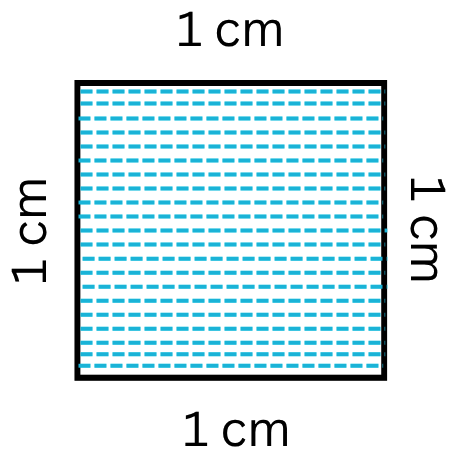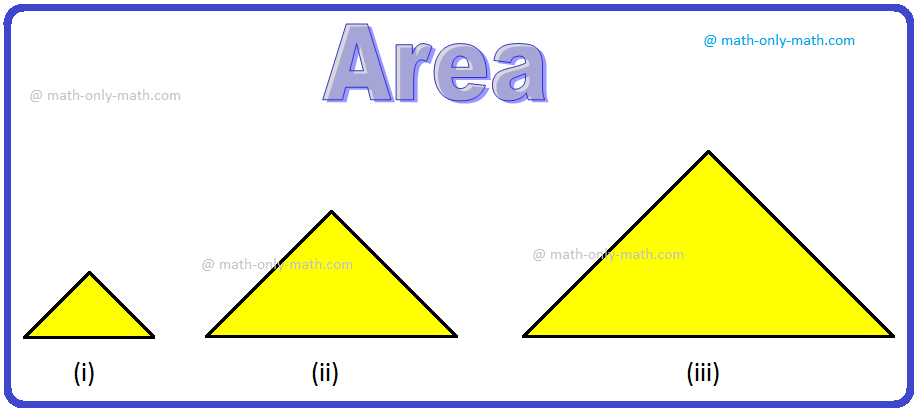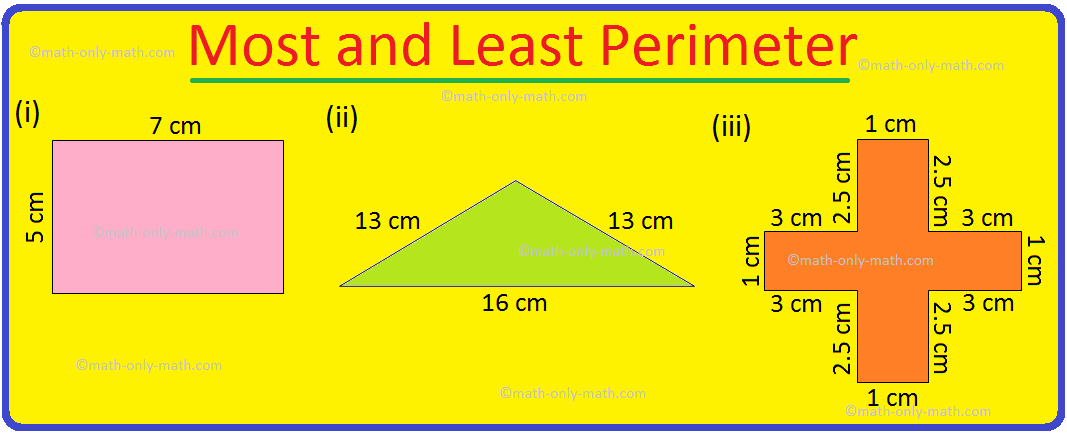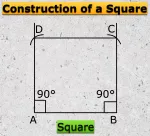Subscribe to our ▶️YouTube channel🔴 for the latest videos, updates, and tips.
Home | About Us | Contact Us | Privacy | Math Blog
Properties of Geometric Progression
We will discuss about some of the properties of Geometric Progressions and geometric series which we will frequently use in solving different types of problems on Geometric Progressions.
Property I: When each term of a Geometric Progression is multiplied or divided by a same non-zero quantity, then the new series forms a Geometric Progression having the same common ratio.
Proof:
Let, a1, a2, a3, a4, .................., an, .......... be a Geometric Progression with common r. Then,
an+1an = r, for all n ∈ N ................... (i)
Let k be a non-zero constant. Multiplying all the terms of the
given Geometric Progression by k, we obtain the sequence
ka1, ka2, ka3, ka4, ................., kan, ................
Clearly, ka(n+1)kan = a(n+1)an = r for all n ∈ N [Using (i)]
Hence, the new sequence also forms a Geometric Progression with common ratio r.
Property II: In a Geometric Progression the reciprocals of the terms also form a Geometric Progression.
Proof:
Let, a1, a2, a3, a4, .................., an, .......... be a Geometric Progression with common r. Then,
an+1an = r, for all n ∈ N ................... (i)
The series formed by the reciprocals of the terms of the given Geometric Progression is
1a1, 1a2, 1a3, ................., 1an, .................
We have, 1a(n+1)1an = anan+1 = 1r [Using (i)]
So, the new series is a Geometric Progression with common ratio 1r.
Property III: When all the terms of a Geometric Progression be raised to the same power, then the new series also forms a Geometric Progression.
Proof:
Let, a1, a2, a3, a4, .................., an, .......... be a Geometric Progression with common r. Then,
a_(n + 1)/a_n = r, for all n ∈ N ................... (i)
Let k be a non-zero real number. Consider the sequence
a1^k, a2^k, a3^k, ........, an^k, ...........
We have, a_(n +1)^k/a_n^k = (a_(n +1)/a_n)^k = r^k for all n ∈ N, [Using (i)]
Hence, a1^k, a2^k, a3^k, ........, an^k, ........... is a Geometric Progression with common ratio r^k.
Property IV: The product of the first and the last term is always equal to the product of the terms equidistant from the beginning and the end of finite Geometric Progression.
Proof:
Let, a1, a2, a3, a4, .................., an, .......... be a Geometric Progression with common r. Then,
Kth term form the beginning = a_k = a_1r^(k - 1)
Kth term from the end = (n – k + 1)th term form the beginning
= a_(n – k + 1) = a_1r^(n – k)
Therefore, kth term from the beginning)(kth term from the end) = a_ka_(n – k + 1)
= a1r^(k – 1)a1r^(n – k) = a162 r^(n -1) = a1 * a1r^(n – 1) = a1an for all k = 2, 3, ......, n - 1.
Hence, the product of the terms equidistant from the beginning and the end is always same and is equal to the product of the first and the last term.
Property V: Three non-zero quantity a, b, c are in Geometric Progression if and only if b^2 = ac.
Proof:
A, b, c are in Geometric Progression ⇔ b/a = c/b = common ratio ⇔ b^2 = ac
Note: When a, b, c are in Geometric Progression, then b is known as the geometric mean of a and c.
Property VI: When the terms of a Geometric Progression are selected at intervals then the new series obtained also a Geometric Progression.
Property VII: In a Geometric Progression of non-zero non-negative terms, then logarithm of each term is form an Arithmetic Progression and vice-versa.
i.e., If a1, a2, a3, a4, .................., an, ..................... are non-zero non-negative terms of a Geometric Progression then loga1, loga2, loga3, loga4, ....................., logan, ......................... forms an Arithmetic Progression and vice-versa.
Proof:
If a1, a2, a3, a4, .................., an, ..................... is a Geometric Progression of non-zero non-negative terms with common ratio r. Then,
a_n = a1r^(n -1), for all n ∈ N
⇒ log a_n = log a1 + (n – 1) log r, for all n ∈ N
Let b_n = log a_n = log a1 + (n – 1) log r, for all n ∈ N
Then, b_ n +1 – b_n = [loga1 + n log r] – [log a1 + (n -1) log r] = log r, for all n ∈ N.
Clearly, b_n + 1 – b_n = log r = constant for all n ∈ N. Hence, b1, b2, b3, b4, ................., bn, ....... i.e., log a1, log a2, log a3, log a4, ..................., log an, ........... be an Arithmetic Progression with common difference log r.
Conversely, let log a1, log a2, log a3, log a4, ..................., log an, ........... be an Arithmetic Progression with common difference d. Then,
log a _(n + 1) – log an = d, for all n ∈ N.
⇒ log (a_n +1/an) = d, for all n ∈ N.
⇒ a_n +1/an = e^d, for all n ∈ N.
⇒ a1, a2, a3, a4, .................., an, ..................... is a Geometric Progression with common ratio e^d.
● Geometric Progression
- Definition of Geometric Progression
- General Form and General Term of a Geometric Progression
- Sum of n terms of a Geometric Progression
- Definition of Geometric Mean
- Position of a term in a Geometric Progression
- Selection of Terms in Geometric Progression
- Sum of an infinite Geometric Progression
- Geometric Progression Formulae
- Properties of Geometric Progression
- Relation between Arithmetic Means and Geometric Means
- Problems on Geometric Progression
From Properties of Geometric Progression to HOME PAGE
Didn't find what you were looking for? Or want to know more information about Math Only Math. Use this Google Search to find what you need.
Recent Articles
-
Worksheet on Area of a Square and Rectangle | Area of Squares & Rectan
Jul 19, 25 05:00 AM
We will practice the questions given in the worksheet on area of a square and rectangle. We know the amount of surface that a plane figure covers is called its area. 1. Find the area of the square len… -
Area of Rectangle Square and Triangle | Formulas| Area of Plane Shapes
Jul 18, 25 10:38 AM
Area of a closed plane figure is the amount of surface enclosed within its boundary. Look at the given figures. The shaded region of each figure denotes its area. The standard unit, generally used for… -
What is Area in Maths? | Units to find Area | Conversion Table of Area
Jul 17, 25 01:06 AM
The amount of surface that a plane figure covers is called its area. It’s unit is square centimeters or square meters etc. A rectangle, a square, a triangle and a circle are all examples of closed pla… -
Worksheet on Perimeter | Perimeter of Squares and Rectangle | Answers
Jul 17, 25 12:40 AM
Practice the questions given in the worksheet on perimeter. The questions are based on finding the perimeter of the triangle, perimeter of the square, perimeter of rectangle and word problems. I. Find… -
Formation of Square and Rectangle | Construction of Square & Rectangle
Jul 16, 25 11:46 PM
In formation of square and rectangle we will learn how to construct square and rectangle. Construction of a Square: We follow the method given below. Step I: We draw a line segment AB of the required…






New! Comments
Have your say about what you just read! Leave me a comment in the box below. Ask a Question or Answer a Question.